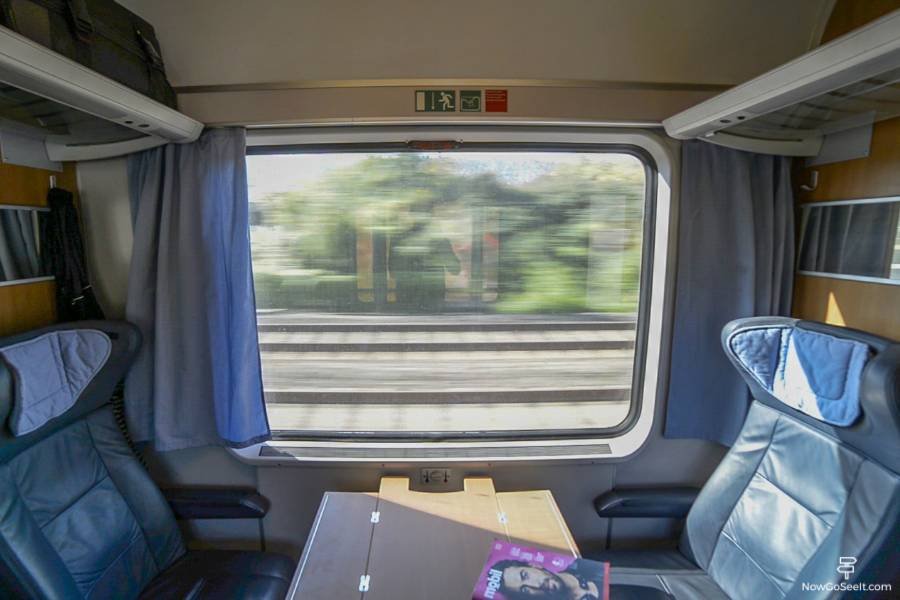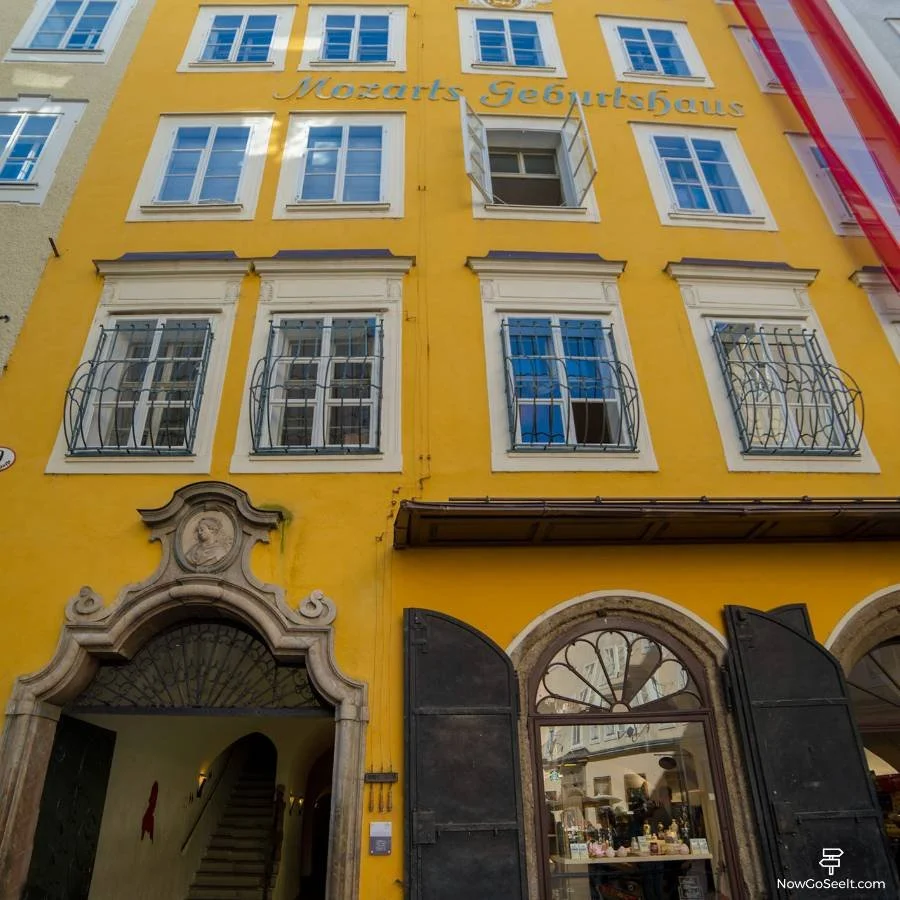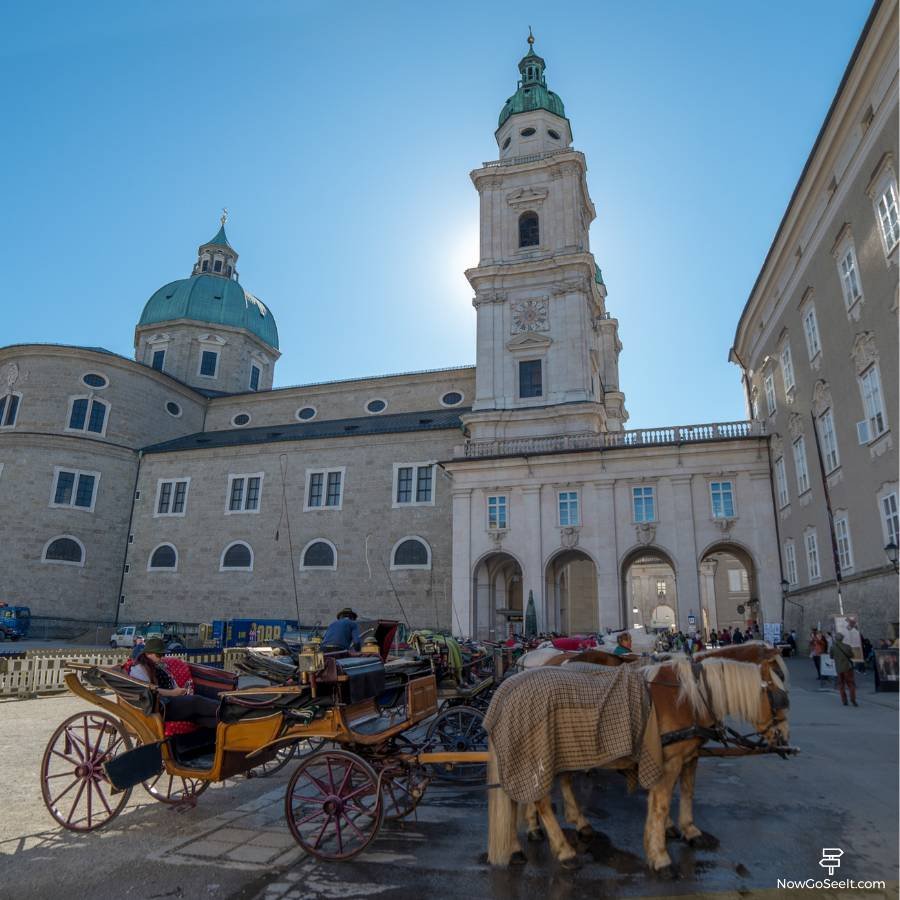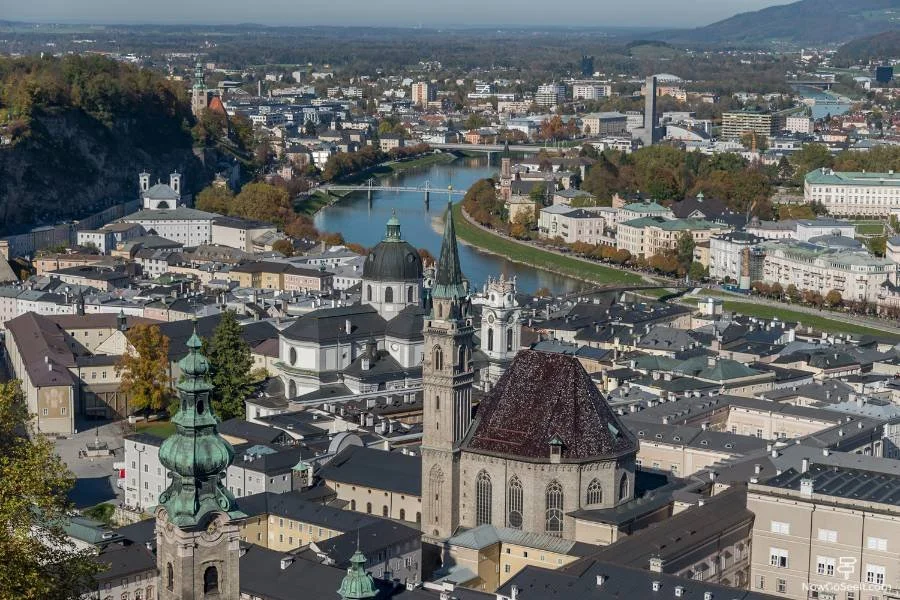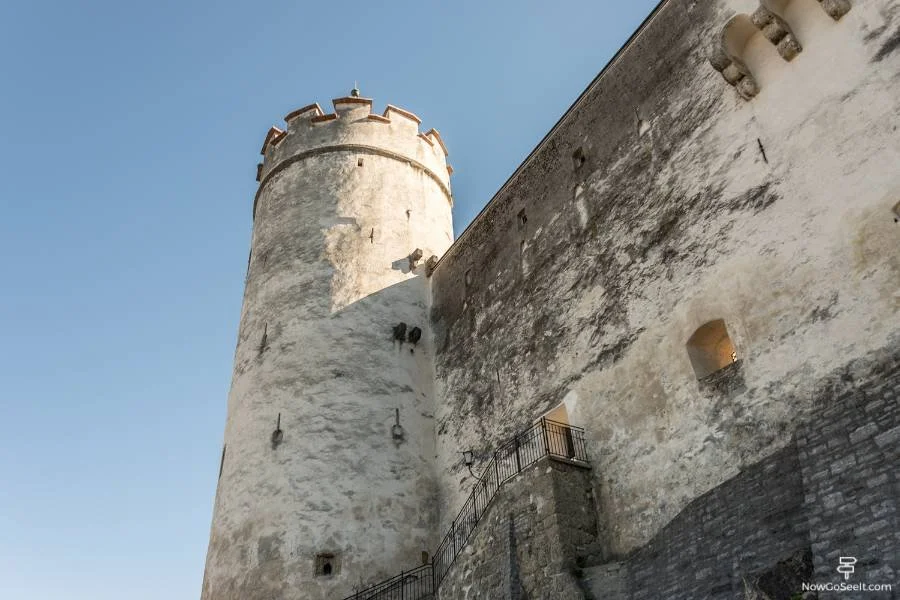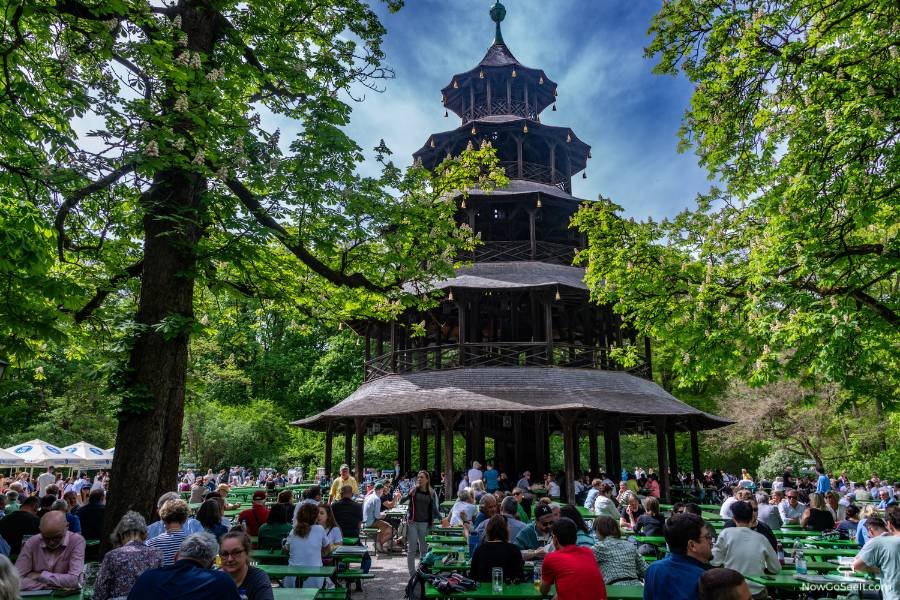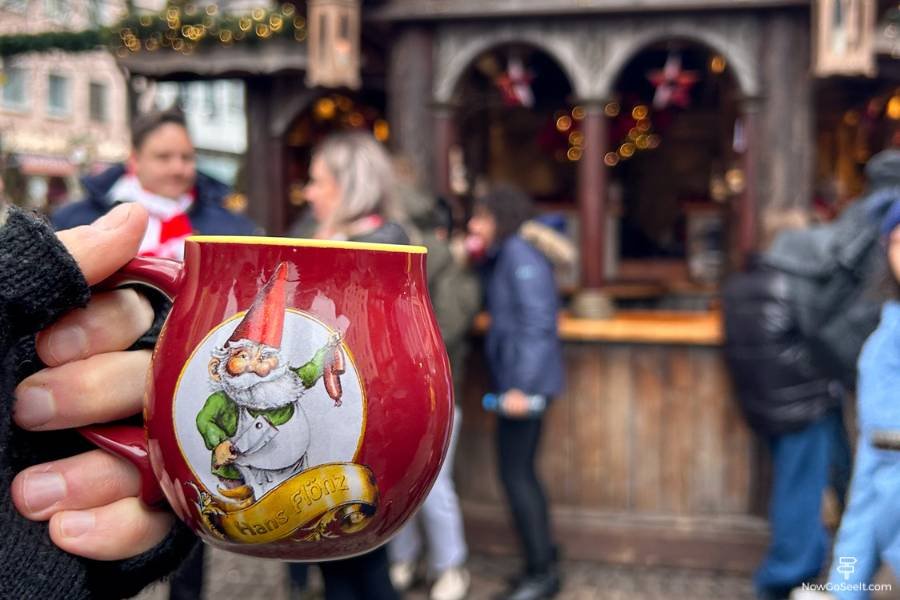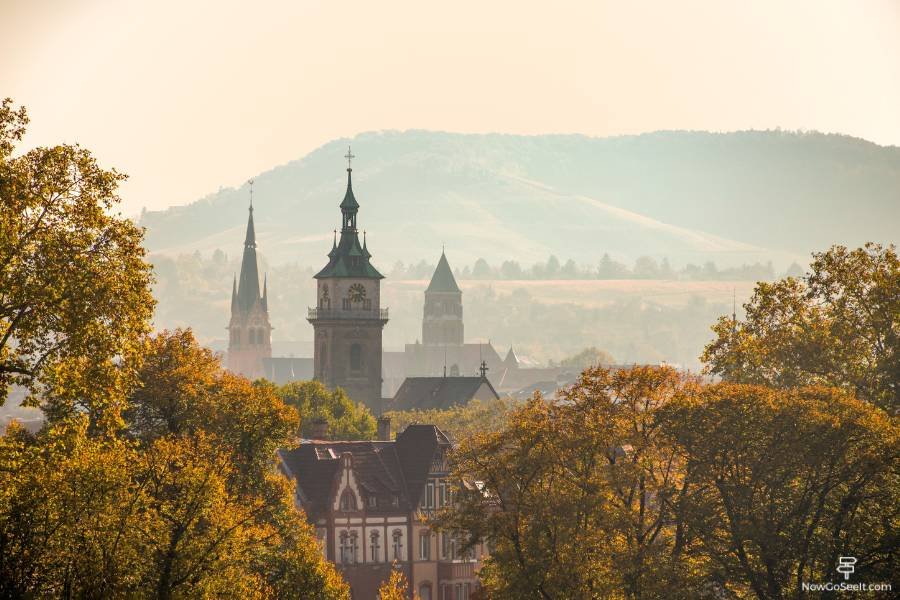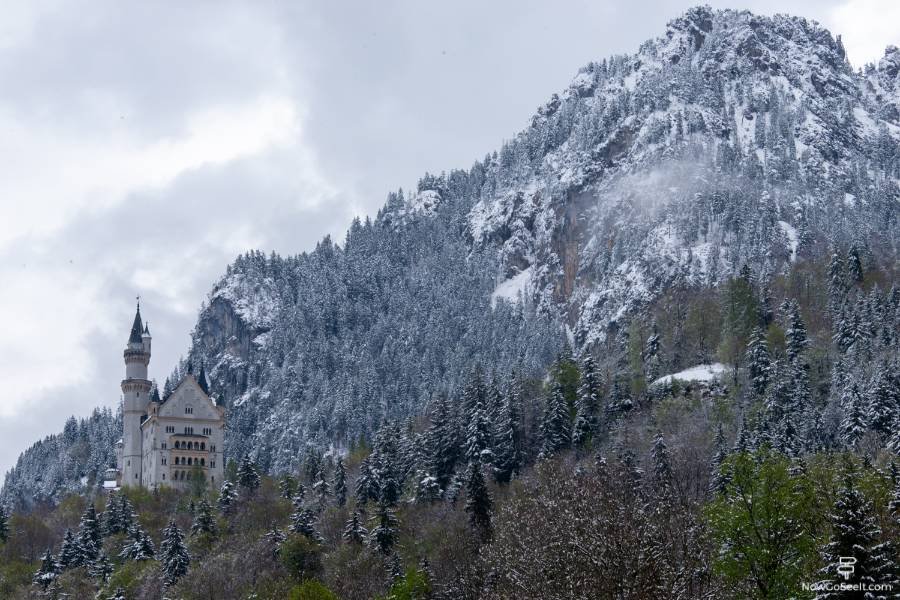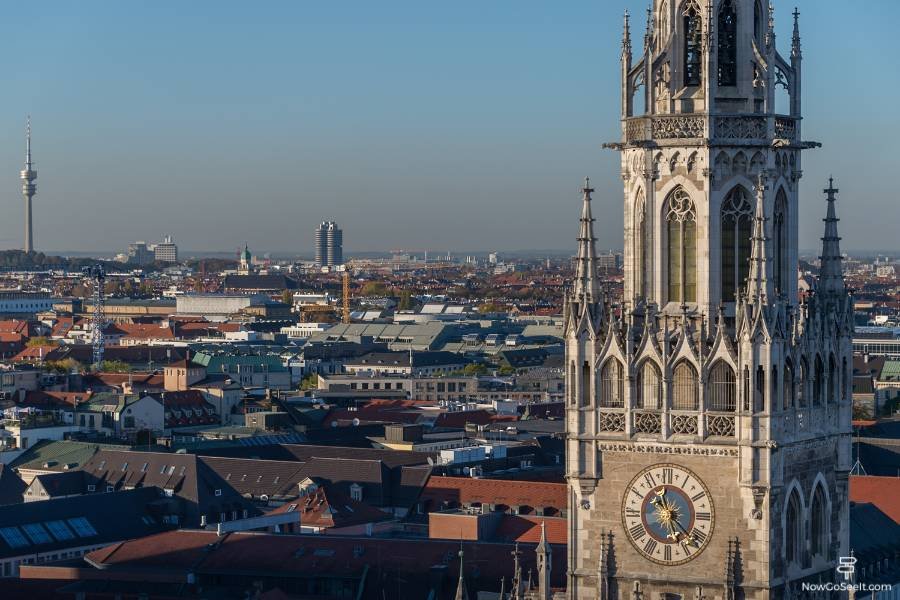Salzburg From Munich: Day Trip to Salzburg by Train
Now Go See It is reader-supported. When you buy through links on our site, we may earn an affiliate commission.
We cross the German border into Austria for a Munich to Salzburg Day Trip. It’s easy to take this trip on your own using the German Rail Pass.
Day Trip To Salzburg From Munich: (Jump To)
Getting to Salzburg From Munich
This is Part of Our Two Weeks in Germany Itinerary.
From Munich to Salzburg By Train
The Munich to Salzburg train takes just under two hours, making it the fastest and most flexible way to go for a day trip from Munich to Salzburg. Buy a Bayern Ticket for regional trains or standard tickets for the direct train to Salzburg from Munich and you’re set for an easy ride.
We purchased a German Rail Pass for our entire Two Weeks in Germany. The pass allows for unlimited train travel throughout the country for a very reasonable price. There are plenty of options depending on your itinerary and the length of your stay. Prices start at €139 with deals for seniors, families, and even people traveling in pairs of two. The tickets are available only to visitors to Germany from outside of Europe.
Despite being across the German border, the route between Munich and Salzburg is included in the coverage area of the German Rail Pass.
Alternatively, You can easily purchase tickets at the train station prior to departure. The Munich to Salzburg train costs around €55 depending on the day and time of travel.
The Munich to Salzburg train time is just under two hours.
From Munich to Salzburg by Bus
Buses are the budget choice for Munich to Salzburg by bus, with frequent departures and simple online booking. Expect about 2 hours 30 minutes travel time; if you see a lower fare on a bus from Munich to Salzburg, it’s usually in exchange for a slightly longer ride.
There are also cheaper options for a Munich to Salzburg bus. Flixbus tickets are about €30 Unibus tickets are approximarly €25. Riding the bus adds another 30 minutes to the travel time, making the Munich to Salzburg bus time about 2 hours and 30 minutes.
Driving From Munich to Salzburg
Prefer the flexibility of a road trip? The Munich to Salzburg drive takes around two hours, and the Munich to Salzburg distance is roughly 147 km (92 miles), making it an easy, scenic hop on major highways.
If you’ve rented a car or are a car visitor from within Europe the Munich to Salzburg drive will take about two hours. This is perhaps the best way to see the beautiful scenery along the way. The Munich to Salzburg distance by road is 147 km (92 miles).
What To Know Before Your Day in Salzburg
If you’re wondering how many days in Salzburg you need, you can cover the highlights in one full day on foot with help from the city’s efficient buses. Sound of Music fans will find tours everywhere, but for most travelers a compact Salzburg day trip focused on the old town delivers the best value.
The city has an efficient bus system, though everything is within a reasonable (and scenic) walking distance from the main train station.
The elephant in the room: The Sound of Music. Yes, you should watch it again before your visit, as the city plays a key role in the film. If you’re the obsessed kind you will find loads of Sound of Music tours (via bus, walking, and probably sing-along).
If you’re wondering how many days you will need in Salzburg, we had no trouble seeing all the main sights in just one day. If you prefer a more relaxed pace, you can easily stretch this Salzburg itinerary out over two days or longer.
Salzburg One-Day Itinerary
Historic Salzburg is a UNESCO World Heritage Site, so this Salzburg day trip centers on walkable landmarks clustered around the Salzach River. You’ll see classic things to do in Salzburg in 1 day stops without rushing between distant neighborhoods.
The entirety of historic Salzburg is listed as a UNESCO World Heritage Site. We will spend the day exploring the historic zone on foot.
Stop 1: Mirabell Palace and Gardens
Start at Mirabellgarten for postcard views, formal flower beds, and a straight-on line to the fortress—an easy win early in the day. It’s free, fast, and perfect for that first day trip to Salzburg photo.
Our first stop, Mirabell Palace, sits on the near side of the Salzach River. The place was built just after the turn of the 17th century. We opted to skip the interior to visit the much more famous gardens (Mirabellgarten), which have been free and open to the public for over 100 years.
The colorful European gardens are a mixture of perfectly kept floral patterns and shaped shrubbery. At the garden exit, be sure to stop for a moment to admire the pair of statues that perfectly frame the hilltop Hohensalzburg Fortress.
Stop 2: Getreidegasse
Cross into the old town and follow Getreidegasse, a pedestrian street packed with ironwork signs, shops, and cafés. It’s a fun stretch to wander before you dive into the headline sights.
From here cross the river via the pedestrian bridge to the main historic area of town via Getreidegasse a pedestrian street home to numerous interesting shops and restaurants. Take some time to shop in some of the wonderful and authentic shops.
Stop 3: Mozart's Birthplace
Mozart’s Birthplace sits right on Getreidegasse and takes about an hour if you’re a music fan. Grab timed entry if you’re visiting in peak season, then continue deeper into the historic core.
On the way, you’ll pass the birthplace and childhood home of Salzburg’s non-Trapp Family star, Wolfgang Amadeus Mozart. The museum is on the must-see list of many visitors and music lovers. If interested tours of the museum typically take about an hour. Tickets can be purchased on-site or in advance online for € 13,50.
Stop 4: Residenzplatz and Salzburg Cathedral
Residenzplatz is the old town’s big, open stage, anchored by Salzburg Cathedral’s baroque towers. Step inside the cathedral (free) and take a lap around the square to line up your next stops.
The city’s main square, Residenzplatz, is our next destination. Surrounding the square are many buildings of historic importance. Dominating the square is the Salzburg Cathedral. The twin onion-topped baroque towers dwarf the other buildings in the historic center. The interior is free to visit.
Stop 5: Salzburg Museum
The Salzburg Museum condenses the city’s story into bite-size exhibits, handy on a one-day schedule. It’s a smart add if you want context without sacrificing too much time.
The Salzburg Residenz, a centuries-old home to former rulers and bishops now houses the Salzburg Museum. The award-winning museum tells the story of Salzburg with multimedia installations and treasures of the past. Admission is just €9.
Stop 6: Hohensalzburg Fortress
Ride the Festungsbahn funicular to Hohensalzburg Fortress for the best views and a compact, self-guided look inside one of Europe’s largest medieval castles. Timed tickets help you avoid lines and keep your Salzburg day trip on track.
Our next destination has been looming over us all day, the massive hilltop Hohensalzburg Fortress. Access is available by a funicular railway (Festungsbahn) which runs every ten minutes. The entrance to the railway is hidden and the signage in the area is very poor. We spent almost an hour, even befriending a fellow lost Californian couple, searching for the entrance.
Here are the confusing, but helpful directions to save you some wandering. Near the cathedral, you’ll find Goldball Salzburg, a massive golden ball art installation on the edge of Kapitelplatz (Capital Square). With the ball and cathedral at your back, you’ll find a tiny passageway to the right of a building labeled Stiegkeller. There is a brown sign pointing toward “Festung Festungsbahn.” Walk down that passageway. The alley narrows and curves to the left. Here you’ll find the stone-arched entrance labeled Festungsbahn.
The funicular takes you to the top of the hill in about a minute with a taste of the hilltop views to come along the way.
Hohensalzburg Fortress is one of the largest medieval castles in all of Europe. Originally built in 1077 with the walls and towers added in the 1400s. Its hilltop location and intimidating size made the fortress impenetrable. The building has only been attacked once in its nearly 1000-year history.
Tours of the fortress are available with timed entrances for about €16 per person. The tickets are customizable depending on what parts of the fortress you’d like to see.
Uniquely the tours are via audio guide with an accompanying chaperone/guide. We found the guided tour to be substantially longer than our attention span, but it’s the only way to see the impressive interior of the building.
After the tour, there are plenty of great vantage points to view the city below. There is also an unnerving marionette museum, a restored historic arsenal, and a regiment museum with uniforms, armor, and weaponry.
Stop 7: Late Lunch
Grab a late lunch near the fortress or back in the old town—both areas have easy, casual options with quick service. If you’re short on time, choose a spot along your return route to the station.
There are a few places to grab a bite to eat. We had a late lunch at a cafe just outside the fortress walls with tables offering amazing views of the city below. After lunch, at about 3 pm, we headed back down the hill and slowly made our way back to the train station.
Stop 8: Salzburg to Munich Train
Head back on the Salzburg to Munich train for a relaxed return after a full day of sightseeing. Direct trains run frequently in the late afternoon and evening, keeping your Munich to Salzburg day trip simple.
We caught a 4:30 pm train, getting us back into Munich at about 6 pm. The entire day was filled with stunning architecture and amazing historic locations. To make it even better, It was one of the cheapest days of our German trip, only spending a few euros for entrance to the fortress and for lunch.
This is part of our Five Days in Munich Itinerary which is part of our Two Week Germany Itinerary.
Other Day Trips from Munich
If you’re building a longer plan, combine this with other day trips from Munich by train like Neuschwanstein Castle or Rothenburg ob der Tauber. Munich makes an ideal home base for easy rail-based day trips across Bavaria and into Austria.
Beyond being a fantastic city in its own right, Munich is a great place to use as a home base for day trips in the region. Germany’s efficient and affordable rail system makes visiting nearby cities easy.
From Munich on a day trip, you can visit the famous Neuschwanstein Castle or travel the Romantic Road to Rothenburg and Harburg.

